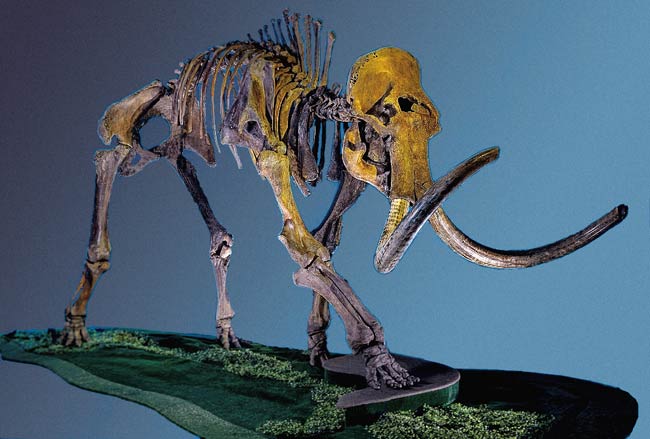Humans Had Help Finishing Off Woolly Mammoths

Humans might have finished off the woolly mammoths, but the genetics of the giants apparently helped them decline well beforehand, scientists now find. The woolly mammoth (Mammuthus primigenius) was coated in hair up to 20 inches long and possessed extremely long, curved tusks up to 16 feet in length. The giants lived for tens of thousands of years, apparently going extinct roughly 12,000 years ago, around the end of the last ice age. For years, scientists suspected that ancient human tribes hunted the mammoths and other ice age giants to oblivion. Recent research seems to contradict this notion, however—for instance, a comet or tuberculosis may have helped kill off the American mastodons (Mammut americanum), closely related to mammoths. DNA lifted from wooly mammoth bones, tusks and teeth now reveals the extinction of those giants was not "a sudden event at the end of the last ice age, but a piecemeal process over tens of thousands of years involving progressive loss of genetic diversity," said University of London evolutionary biologist Ian Barnes. The researchers analyzed 96 mammoth samples that often came as a result of gold mining in Alaska or paleontological digs in Siberia or Europe. Barnes recalled one instance when he and some Russian colleagues went collecting samples in Siberia and the boat broke down miles upriver from their camp. "I looked at the two Russians, who probably had about 50 years of Arctic experience between them, and asked what we did now. 'Now we row!'" Barnes said. "Which was a bit tricky, as they only had one paddle. After a while I asked how long it would take, and one of them said, 'Maybe one day, maybe two, ha, ha, ha.'" "We had no food, and just as critically, none of the key elements of any Siberian field team—no tea and no sugar," Barnes said. "After a couple of hours of zigzagging down the river, we got picked up by a passenger ferry and taken in as the guests of some local guys who plied us with vodka and cranberries. You get a fair number of transport problems in Siberia, it seems, but things generally work out OK. That said, I last went in the field five years ago, and I'm fairly happy about that." When all was said and done, the team's analyses suggest that woolly mammoth populations remained mostly constant in size for their last 70,000 years. However, occasional drops in population size led to gradual reductions in genetic diversity, findings detailed in the June 19 issue of the journal Current Biology. "The fact that they were not genetically diverse might have meant they were not very adaptable to climate change or disease," Barnes told LiveScience. "Maybe when the climate changed and warmed up, things became wetter, and boggy ground doesn't suit mammoths too well. Then humans might have killed off the small, remaining terminal populations." The fact that mammoths seemed to hang in there for tens of thousands of years with fairly low genetic diversity, not really expanding much in population size, "could be interpreted as having implications for modern elephant conservation," Barnes said. "Perhaps all the elephant family are able to exist for long periods with low genetic diversity and at a constant population size." "However, I would be extremely cautious about going down this route, as we don't really have enough data to extrapolate in that way, and modern elephants have human predation to deal with in a way that mammoth didn't for most of their history," Barnes cautioned.
- Suriviving Extinction: Where Woolly Mammoths Endured
- The Perils of Being Huge: Why Large Creatures Go Extinct
- Pleistocene Park Could Solve Mystery of Mammoth's Extinction
Sign up for the Live Science daily newsletter now
Get the world’s most fascinating discoveries delivered straight to your inbox.










